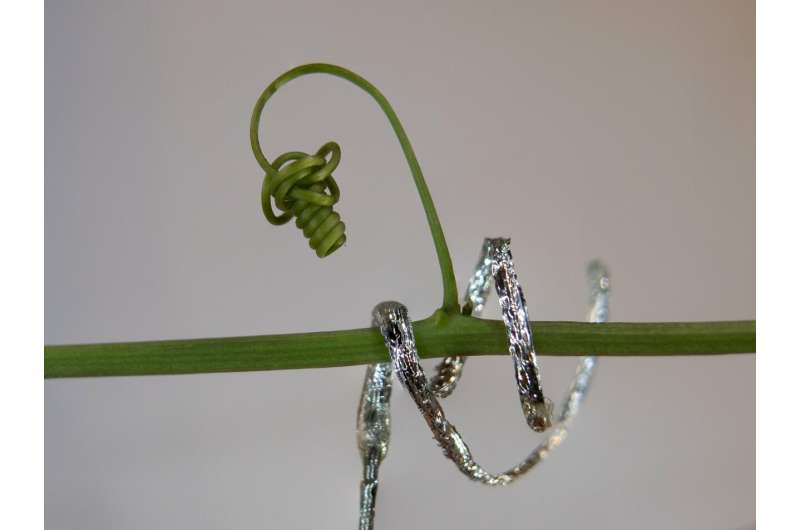The first tendril-like soft robot able to climb

Researchers at IIT-Istituto Italiano di Tecnologia created the first soft robot mimicking plant tendrils. It is able to curl and climb using the same physical principles determining water transport in plants. The research team is led by Barbara Mazzolai, and results have been published in Nature Communications. In the future, this tendril-like soft robot could inspire the development of wearable devices such as soft braces that actively morph their shape.
The researchers took inspiration from plants and their movement. Plant mobility is associated with growth as they continuously adapt their morphology to the external environment. Even the plants organs exposed to the air are able to perform complex movements such as the closure of the leaves in carnivorous plants or the growth of tendrils in climbing plants, which are able to coil around external supports to favor the growth of the plant, and uncoil if the supports are not adequate.
The researchers studied the natural mechanisms by which plants exploit water transport in their cells, tissues and organs to move, and replicated it in an artificial tendril. The hydraulic principle is called "osmosis," and is based on the presence of small particles in the cytosol, the intracellular plant fluid.
Starting from a simple mathematical model, the researchers first understood how large a hydraulic-driven soft robot should be. They developed a tendril-shaped robot with the capability of performing reversible movements, like real plants do. The soft robot is made of a flexible PET tube containing a liquid with electrically charged particles (ions). Powered by a 1.3 volt battery, these particles are attracted and immobilized on the surface of flexible electrodes at the bottom of the tendril; their movement causes the movement of the liquid, which moves the robot. To go back, the electric wires are disconnected from the battery and joined.
The possibility of exploiting osmosis to activate reversible movements has been demonstrated for the first time. Using a common battery and flexible fabrics, moreover, suggests the possibility of creating soft robots easily adaptable to the surrounding environment, with potential for enhanced and safe interactions with objects or living beings. Possible applications range from wearable technologies to the development of flexible robotic arms for exploration. The challenge of imitating plants' ability to move in changing and unstructured environments has just begun.
More information: Indrek Must et al, A variable-stiffness tendril-like soft robot based on reversible osmotic actuation, Nature Communications (2019). DOI: 10.1038/s41467-018-08173-y
Journal information: Nature Communications
Provided by Istituto Italiano di Tecnologia - IIT





















